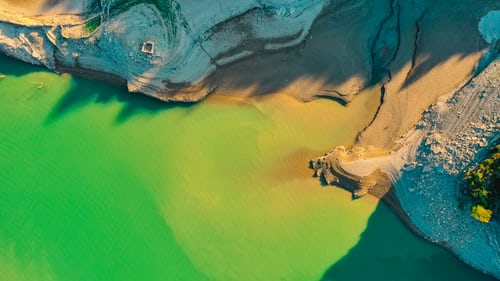While photography has been around for less than 200 years, the history of watercolours spans much farther back in time.
Watercolours are often an overlooked medium in the art world, cast aside for bolder oil and acrylic works.
However, the reality is that watercolours are so much more than art; they are priceless parts of our collective history.
Each piece, with its unique colours, textures and tones, offers us a glimpse into the past and to a world that no longer exists.
Watercolours from around the globe help to not only show us our past, but also provide great insight into the future.
They allow geologists, conservationists, and ocean and coastal scientists to reach back in time for an understanding of our present and to potentially safeguard the future.
Despite the combined artistic and historical value of watercolours, many have never seen the light of day. The fragility of watercolour means that many works have had to be kept locked away for decades, even centuries in some cases, for their own protection.
Being susceptible to even the most minor change in temperature or lighting conditions, watercolours are often archived in dark rooms, away from the public eye.
The few works that the general public is lucky enough to view are only available for a handful of months – often with gaps of several years in between – to preserve them.
Thankfully, through the work of Watercolour World, these essential works of recorded history are less likely to be forgotten.
Since 2016, Watercolour World has made it its mission to save priceless works of watercolour art, making them accessible to people from all walks of life while preserving visual records of our history.
The charity works to digitally preserve thousands of never-before-seen pre-1900 watercolours, making them available on a free online database.
To date, more than 83,000 watercolours have been curated as part of a breathtaking collection that details the world before photography, never-before-seen cultures, people, and lives lived. The delicacy of watercolours has always been detrimental to their lifespan, which is why thanks to using safe LED scanning technology, they can live eternally in the digital world.
The ever-growing catalogue of watercolours has in many ways meant our history is being rediscovered like never before.
Many historical projects are currently utilising the existing collection of landscape watercolours to document and predict changes around the world, with one of the most recent studies exploring British coastlines.
For centuries, coastal erosion has been an issue that has affected people, the built environment and infrastructure, but with the help of collections from Watercolour World, predictions can now be made.
The State of the British Coast Study has utilised various works to help discern the timeline of eroded beaches, changes in cliff lines and observed how engineering projects have impacted the shoreline.
The results of these critical studies will hopefully aid with ongoing conservation and ecological efforts, but it is not the only environmental and historical application.
Philosopher George Santayana once said: “Those who cannot learn from history are doomed to repeat it.”
One of the most pressing issues of the 21st century is climate change, and with the help of watercolours, scientists and researchers can evidence the changing landscape of our planet.
It is believed that the very first depiction of a glacier is seen in Abraham Jäger’s painting of the Rofener Glacier in Austria from 1601, and throughout history, many more watercolour depictions have appeared.
Within Watercolour World’s archive alone, there are striking renditions by Horace Benedict de Saussure that demonstrate glacial retreat.
It is these works such as those curated by Watercolour World that will ultimately help to document the changes over the last 400 years, offering a more accurate insight into what the future holds.
While Watercolour World believes that watercolours should be accessible to all, it is clear that this growing collection represents so much more than art alone.
















